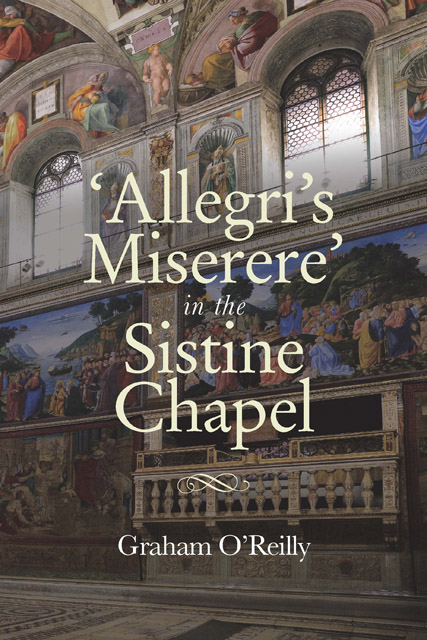Book contents
- Frontmatter
- Contents
- List of illustrations
- List of tables
- List of music examples
- Acknowledgments
- Note on the text
- Introduction: myth and reality
- Part One The Sixteenth and Seventeenth Centuries
- Part Two The Eighteenth Century
- Part Three The Nineteenth Century
- Part Four Performing the Miserere in the Twentieth Century
- Part Five Appendices, Editions and Notes
- List of appendices
- Bibliography
- Index
6 - Eighteenth-century sources 2 – The Paris and Manchester manuscripts
Published online by Cambridge University Press: 13 January 2023
- Frontmatter
- Contents
- List of illustrations
- List of tables
- List of music examples
- Acknowledgments
- Note on the text
- Introduction: myth and reality
- Part One The Sixteenth and Seventeenth Centuries
- Part Two The Eighteenth Century
- Part Three The Nineteenth Century
- Part Four Performing the Miserere in the Twentieth Century
- Part Five Appendices, Editions and Notes
- List of appendices
- Bibliography
- Index
Summary
Background and provenance
Given the loss of Mozart’s transcription of the Miserere in performance, it is fortunate that another source of information directly from the Papal Choir survives, in the form of two manuscripts created by some of its members for a French public servant called Louis Mesplet. One (henceforward referred to as P) is in the Bibliothèque nationale in Paris, with the catalogue number D.14499. It is part of the Fonds Conservatoire – that is, it was formerly in the library of the Paris Conservatoire. The other (Man) is now in the John Rylands Library of the University of Manchester, where it is catalogued as MS Italian 45.
The title page of P (Fig. 10) describes it as a ‘Collection de musique Tirée de la Chapelle Sixtine appartenant à Mesplet’ (‘a collection of music from the Sistine Chapel belonging to Mesplet’). The flourish with which ‘Mesplet’ is written suggests that the title is in his own hand, a supposition which can be verified by comparison with the summary of his career in the public service which he made in 1824.
Man was once part of the Biblioteca Lindesiana, the large library assembled by Alexander, Lord Lindsay (1812–80), the manuscript portion of which was purchased by the Rylands Library in 1901. It is not typical of the manuscripts collected by Lord Lindsay, and it is not at present known how it came into his collection, as there is no surviving accession register for the manuscripts of the Biblioteca Lindesiana. The paper used is similar to that of P, and although slightly smaller now it has been visibly cut down during the binding process.
Both P and Man give verses 1 (a5) and 3 (a4) of the Allegri Miserere in two versions. The first of each, marked come l’originale, is clearly derived from Vatican sources – CS 341 for the five-part verses and CS 340 for the four-part ones – with slight differences of detail in repeated notes and underlay (variants are given with the transcription of CS 340–1 in Appendix 3).
- Type
- Chapter
- Information
- Allegri's Miserere in the Sistine Chapel , pp. 77 - 110Publisher: Boydell & BrewerPrint publication year: 2020



